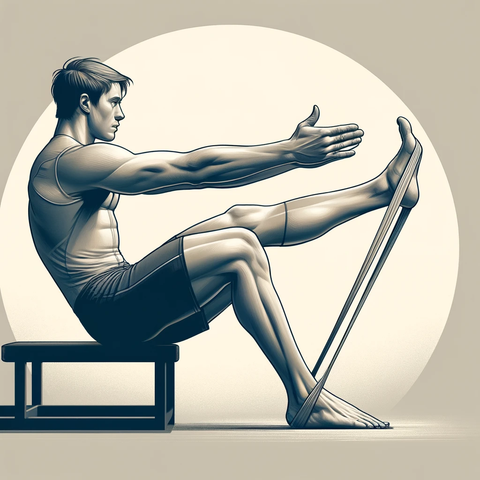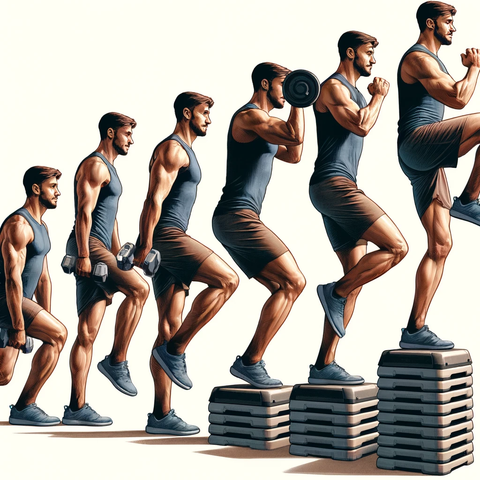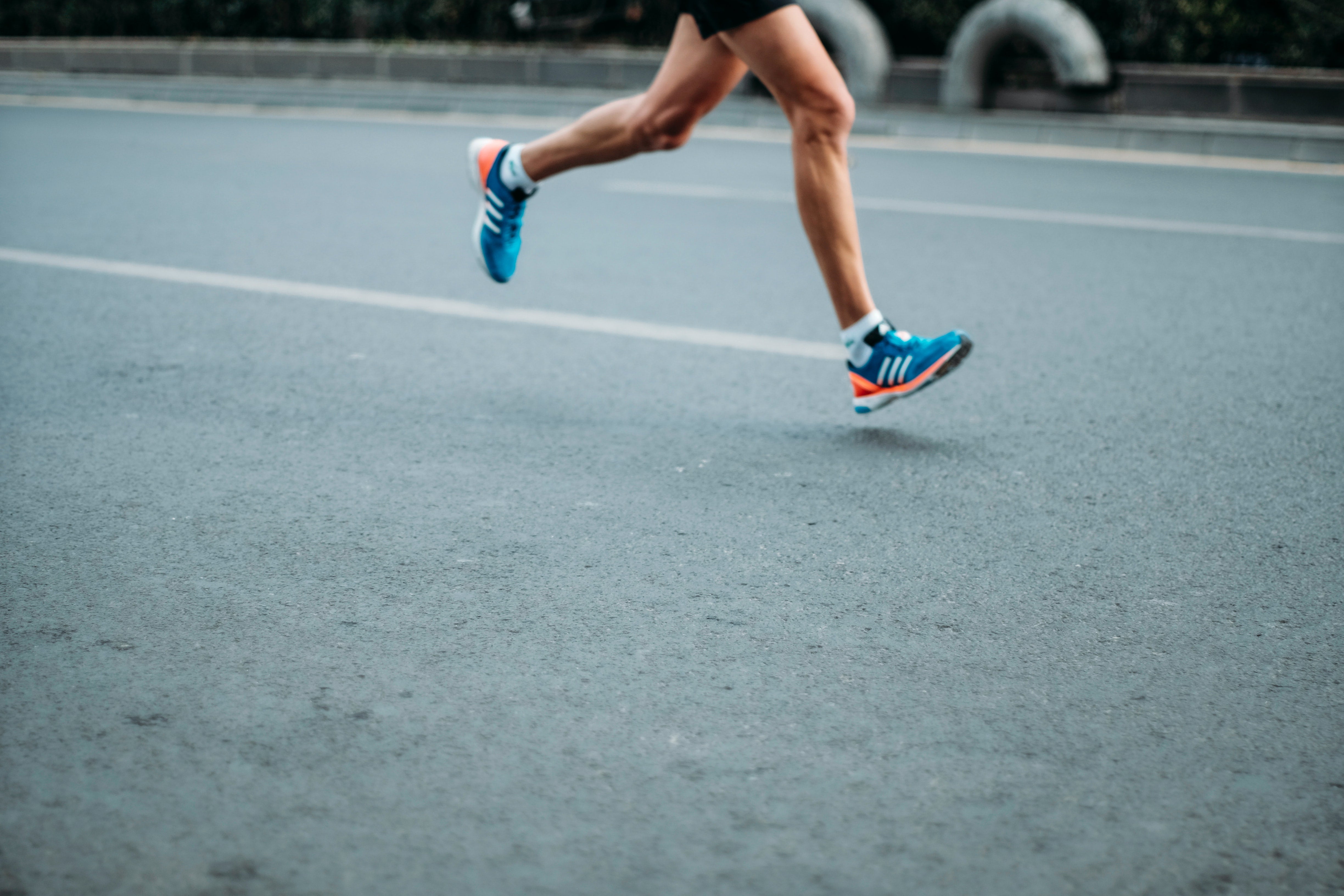Contents (Jump to a section)
How to Fix Tight Calves From Running

Running is an amazing way to get a great cardio workout in, stay in tip-top athletic shape, and burn away stress just as much as calories. However, there’s a big downside to running, especially long distances: it hurts! Many runners experience tight calves from running, sometimes to the point where it can make it a struggle to walk the day after a long run.
Thankfully, you don’t need to suffer through the pain - there are steps you can take to reduce tight calves after running. In this article, we’re going to look at how to get rid of tight calves from running, so you can hit the track day in, day out.
Why are Runners Calves so Tight After Running?
Before we discuss how to get rid of tight calves from running, it’s important to look at the different factors that may be causing calf tightness. If you’re wondering “why are my calves so tight after running?”, the cause could be one of the following:
Poor Running Form
Running with poor form, such as overstriding, can place extra stress on the calves and lead to tight calves & knee pain. A more serious issue with poor running form is that it could lead to long-term injury, so it’s important to make sure you’re running technique isn’t going to cause you any issues down the line.
Improper Footwear
Wearing shoes that do not provide enough support or cushioning for your feet or ankles can also contribute to tight calves. Even a good pair of running shoes can lead to tight calves while running if they are old and the soles no longer provide enough cushioning.
Calf Muscle Overuse
Overusing your calf muscles through excessive running or training can also lead to tight calves while running. If you’re just getting into running, or looking to pick it back up after a break, it’s important to start with short distances and work your way up to longer runs. It’s also important to take some rest days to give your muscles time to recover and prevent overuse injuries.
Calf Muscle Tightness
In some cases, tight calves after running may simply be the result of muscle tightness or imbalances. It’s normal for your body to experience some muscle soreness after prolonged activity, and it shouldn’t cause any long-term issues as long as you take the proper time to rest and recover.
Dehydration
Dehydration is another leading cause of tight calves after running. This one is easily preventable - make sure your body is nice and hydrated before taking off on a run. Of course, you don’t want to drink a gallon of water right before hitting the track, but hydrating in the hours leading up to your run (and of course afterward) is very important and can prevent tight calves after running.
Other Potential Causes
If you’ve addressed all of the factors above and are still experiencing tight calves from running, there are a few other potential causes. Your calf pain may be caused by a vitamin or mineral deficiency, poor sleep and rest, or an underlying medical condition. You may want to consider consulting a healthcare provider to discuss these and come up with a plan for how to get rid of tight calves after running.
How to Get Rid of Tight Calves From Running

While knowing what’s causing your tight calves from running is half the battle, it doesn’t make the tightness go away! If you’re wondering how to release tight calves, here are some steps you can take to ease your pain.
Stretching Movements for Tight Calves
The best way to relieve tight calves after running is by stretching. Rather than trying to do it on your own, get some quality stretching equipment and use it to stretch out your calf muscles. If you really want to know how to get rid of tight calves from running, the stretching equipment you need to get your hands on is CastleFlexx.
The CastleFlexx device is an award-winning, patented health device that can stretch out muscles in both your upper and lower body. It’s perfect for sufferers of tight calves while running, and is the only device of its kind that doesn’t require you to hold onto a painful rope, strap, or band while you stretch - the natural cork handles are so much more comfortable!
After using CastleFlexx for a few days, you will no longer be asking “why are my calves so tight?”. CastleFlexx delivers so many benefits of assisted stretching and is extremely easy to use. It can be used to stretch muscles, release tension for different body parts, and increase ankle mobility depending on how it’s used. If you’re wondering how to get rid of tight calves from running, CastleFlexx is your best bet.
Foam Rolling & Other Deep Tissue Techniques for Tight Calves
Foam rolling and other deep tissue techniques can be effective in relieving tight calves after running by loosening muscle knots and adhesions. Foam rolling applies pressure to the affected area, which increases blood flow and promotes the healing of your calf muscles.
To use your foam roller, sit on the floor, place the roller underneath your calves, and roll it up and down your calf muscles. Some runners even do this before a run, but for most, it’s part of a post-run recovery routine. Foam rolling is also one of the best stretches for shin splints and can help you recover more quickly from this condition.
Strengthening Exercises to Prevent Tight Calves While Running in the Future
Incorporating strengthening exercises into your running routine can help prevent tight calves from running. Exercises such as calf raises and toe raises can help improve your calf strength and flexibility, reducing the risk of muscle tightness and injury.
To do calf raises correctly, stand on a flat surface with your feet shoulder width apart. Lift your heels off the floor until you can feel yourself flexing your calf muscle (don’t go too high or you will overbalance). Hold the pose for 1-2 seconds, then slowly lower your heels back down.
Improve Your Running Form to Get Rid of Tight Calves While Running
If you’re asking “why are my calves so tight after running?”, it may be due to your form. Take some time to improve your running technique, like landing on the middle of your foot, keeping your head straight, and shortening your strides. This will help to reduce the impact on your calves, and should reduce calf tightness while running.
Examine Your Footwear and Consider Making a Change
Good running shoes are worth the investment. Make sure your shoes fit well, they are not too tight or too loose around the ankle, and they have adequate cushioning and support. Even high quality shoes will eventually wear out and not provide proper support after a while. It’s generally recommended to replace your shoes every 300-500 miles.
Make Time for Rest and Recovery
Rest days are an important part of any athlete’s training plan. Make sure you incorporate rest days, dedicated time for stretching (such as yoga or fascial stretch therapy) and cross-training, and perhaps even a massage into your routine. Your body needs time to heal, and resting is an important part of injury prevention.
Improving your flexibility can also help to prevent tight calves while running, so it’s important to set aside some time to work on this. You may be wondering, how long does it take to get flexible? It depends on a lot of different factors (including age, genetics, gender, and so on), but stretching regularly can help to speed up the process.
Best Stretches to Release Tight Calves after Running
Plantar Flexion Resistance Exercise

This exercise aims to strengthen the calf muscles and enhance ankle mobility. Sit on the ground with one foot as a support, and the other slightly extended in front. Wrap a resistance band or towel around the ball of the foot. Hold the band/towel with both hands, pushing the foot downward while keeping the heel in place. Return the foot to the neutral position in a controlled manner.
Frequency and duration:
-
Push down for 2 seconds
-
Hold for 2 seconds
-
Lift back up for 2 seconds
Complete 3 sets of 12 on each leg.
Easier - Apply less resistance
Harder - Apply more resistance
Plantar Release (Recovery)

The calf connects to the foot through the Achilles Tendon, forming the posterior chain. Tight muscles along the bottom of the foot can impact the loading of the calf muscles, leading to tightness during running.
Sit on a chair with your foot on the floor, preferably on a carpet or a folded towel.
Use a tool like a Riixo Ice Ball, lacrosse ball, or hockey ball. Roll the ice ball under the foot with moderate pressure, moving from the heel to the ball of the foot.
Duration and intensity:
Complete this for 2-3 minutes.
Limit to a maximum of 2 times a day to avoid irritation.
Bent Knee Calf Raise With Forward Lean

This exercise targets the calf muscles with a forward lean to engage them differently. Start with feet hip-width apart, bend your knees slightly, and lean forward. Rise onto your toes, lifting your heels, then lower them back down.
Duration and intensity:
Perform 2 sets of 15 repetitions with a moderate intensity, focusing on controlled movements.
Eccentric Calf Raise

The eccentric calf raise focuses on the lowering phase. Stand on a raised surface with heels hanging off the edge. Lift onto your toes using both legs, then slowly lower your heels below the surface, emphasizing the controlled descent.
Duration and intensity:
Perform 3 sets of 12 repetitions with a moderate to high intensity, ensuring a slow and controlled lowering.
Single-Leg Calf Raise Progression

Begin with the basic single-leg calf raise by lifting one heel off the ground. Progress by incorporating variations, such as raising the leg in front or to the side during the calf raise. This challenges balance and strengthens the calf muscles individually.
Duration and intensity:
Perform 2 sets of 12-15 repetitions on each leg with a moderate intensity, adjusting as needed for balance.
When to Seek Professional Help for Tight Calves From Running
It’s very important to stop yourself from “running through the pain”. If you try regular stretching, are wearing good shoes, work on your form, and are still experiencing tight calves, you may be experiencing a more serious issue. If your calf pain persists even after you spend some time resting, it’s a good idea to schedule a visit with your healthcare provider.
Final Thoughts on How to Fix Tight Calves While Running
Tight calves while running can take the fun out of your workout and make it hard to achieve your athletic goals. Luckily, you can combat tight calfness with good shoes, proper recovery time, and regular stretching. The CastleFlexx is the perfect addition to your stretching and recovery routine, and can deliver much needed relief from calf tightness.
Try the CastleFlexx today and beat calf tightness for good!
